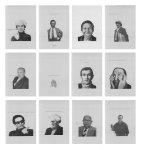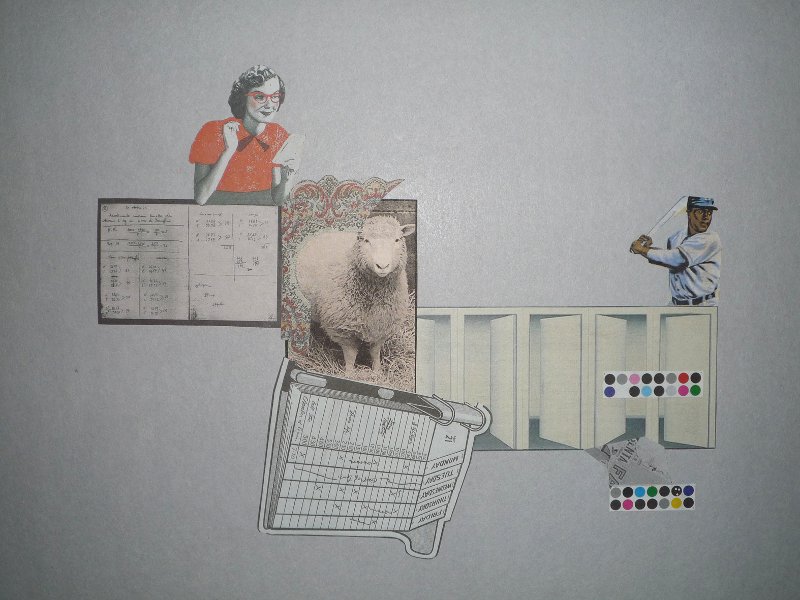
Accueil > Les rubriques > Images > Collective and Intellectual
Collective and Intellectual
Art according to Angelo Ricciardi
, et
Words and images joined in a subtle and intellectual game. Semantic subventions and ambiguity of the vision. Angelo Ricciardi’s expressive universe is complex and many-sided and it develops along two lines : the plurality of making art and the intellectual involvement of enjoying it.
Angelo Ricciardi was born in Naples and works in its province. He is an atypical artist in the Italian context : self-taught, cosmopolitan and at the same time strictly connected to his roots, he is also the supporter of a wide community of artists around the world and he deliberately stays away from the spotlights of a certain art system which endorses evanescent and blockbuster events.
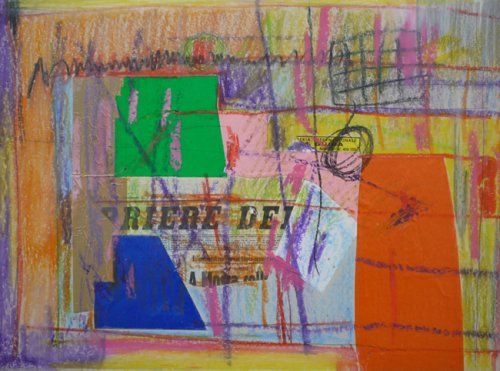
- Untitled, collage and wax crayon on cardboard, 35x50cm, 1983-84
His artistic production starts with drawings, collages and paintings in an informal-material style, that respond to an innate expressive urge. In 1999, exactly a drawing exhibition opens the doors to several solo and collective expositions, revealing his artistic research firmly anchored to the language analysis and the dialectic between sing and image. The word is ever-present in his artworks : from several artists’ book to semantic games as titles of his works and installations, from collages to videos.
The language he develops finds a strong and inevitable mark in his biography starting from his political militancy, that evolved into the civil commitment we can see in his works, as well as the desire to leave behind the narrow scene of contemporary art intended as a production system for an audience of insiders, to reach instead a completely outside viewer, to seduce him, intrigue him, to invite him to reflect and participate.
His own need to expression finds in the collective projects nearly a downside.
Ricciardi does not embody the romantic idea of the artist focused on his own inner life, dedicated to the production of works that may somehow tell his thought. He is rather looking for a "We" in the art, for a collective elaboration pursued with a creative syntax and expressive media that owe much to Fluxus.
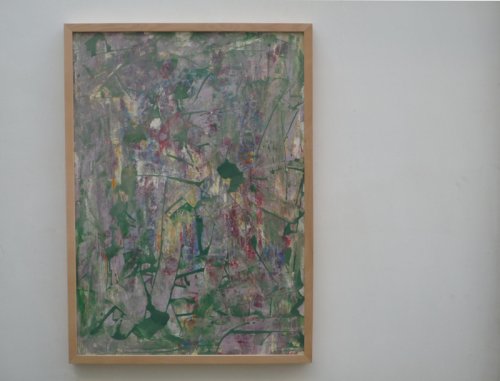
- Untitled, acrylic on cardboard, 70x50 cm, 1983-84
All this is clear even since the early projects, such as PATENTED : il pane non si butta = Do not Throw Out the Bread, realized in 2000 with the U.S. artist Coco Gordon, under the shared pseudonym of Còngelo.
Raised within Orestre3, that was a significant experiment of an artists community linked to an artist-in-residence program that travelled around the South of Italy and in that year settled in Montescaglioso (Matera), Patented tried to emphasize the risks of the global spread of patented transgenic food known as GMO (Genetically Modified Organism), through a poetic narrative on bread.
The project involved artists, farmers and biological food producers in order to describe the production and distribution system of organic food and to highlight the threat of GM food and to suggest a temporary monopoly on the patent.
In addiction to its usual role of expressive medium Art acquired this way also that of a method, that is able to suggest solutions to social and priority of resources problems.
The main element of Patented was a dinner, organized within the Oreste3 section about meditation on food called Quindici cene (Fifteen dinners), during which only biological food grown by suppliers and farmers involved in the projects was served.
The artists involved - Alison Knowles, Ernesto Pinto, Rita degli Esposti, Sheila Sporer, Jasa Ban, Fiormario Cilvini, Antonella Catelli and Ruggero Maggi - gathered in the group called TIKYSK (Things I Know You Should Know = cose che io so che dovresti sapere) didn’t attend the dinner but they had just sent by email instructions in the form of recipes for actions devoted to the theme.
Those “recipes” lied on the tables so that, during the dinner, the guests could choice the sequence of the actions to make and to take part in.
In a sphere much closer to Art tout court, we can find the red thread of an artistic community scattered around the world in the work Happy Birthday, Mr Johns !, a unique global celebration of Jasper Johns’ seventy-fifth birthday (15 May 2005) inspired to his well-known Three Flags, in which we can see a significant swap among the stars and stripes of the American flag.
The performance included a three-layer birth cake reproducing the modified Three Flags in the 404 Art Gallery of Naples ; the cake was a part of a contemporary celebration in Turin, Milan, Gleisdorf, Perugia, Stuttgart, Livorno, L’Aquila, Pforzheim, New York, Madison, Florence, San Francisco, Rome, Glasgow carried out and documented by Mary Mesch Durchblick, Martin Krusche, Nello Teodori, Steffen Müller, I Santini Del Prete, Franco and Enrico Sconci Fiorillo (for MUSPAC , Experimental Museum for Contemporary Art), Mary Jo Walters, Vito Pace, Alessandra Borsetti Venier, Coco Gordon, Eva Forsman, Alexandros Kyriakides and Annmarie Crampton all involved in the original artistic family of Ricciardi.
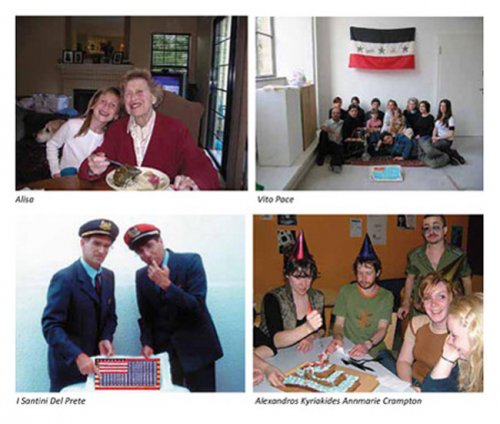
- Happy Birthday, Mr Johns !
Mr Johns’ birthday photos were taken by the artists and they were created almost as artist postcards to celebrate contemporary icons, highlighting their status of Western imagination cornerstones but refusing to accept them passively and almost suggesting that -through a collective ritual, even if geographically diversified- the cultural instances they bring can and should be reprocessed and redefined to become alive cultural elements to be accepted or rejected but to be always conscious of. In order to not be crushed or swallowed.
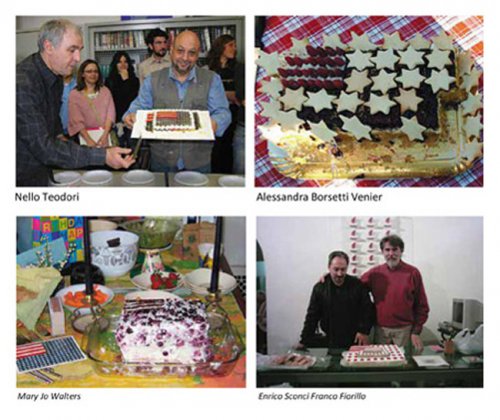
- Happy Birthday, Mr. Johns !
In Ricciardi’s work the reflection upon the role of the viewer and on the function of art is a permanent feature, and its best example is Art Line do not cross. It’s another collective project, developed around a tape openly similar to those used in the United States to delimit the crime scene (Police line do not cross).
The tape, in some way, establishes the border between art and real world, a border that since the German philosopher and sociologist George Simmel (in the essay Der Bildrahmen. Ein ästhetischer Versuch - The frame of the painting. An aesthetic study, 1902) is identified as a necessary diving line between Art and Life, the line that had been broken by the Avant-garde artists, as Picasso and Braque, through the collage but that was somehow re-established by the “contemporary art system”, which distinguishes between artists and viewers, insiders and passive audience, creating an artificial and arbitrary border as that belonging to the crime scene, and which Ricciardi seems to wish as temporary or crossable.
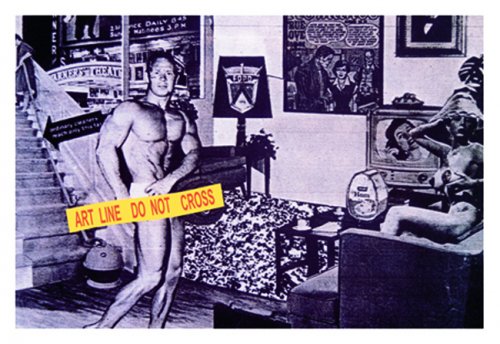
- Art Line do not cross
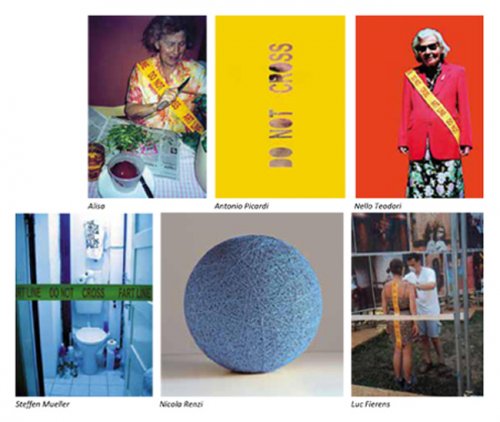
- Art Line do not cross
Even in this case, the collective development and interpretation is the heart of the work. The tape was sent to some artists in several countries and it has become the starting point for a common reflection on the borders between art and viewer, between creation and enjoyment, obtaining unexpected, ironic and sometimes paradoxical results.
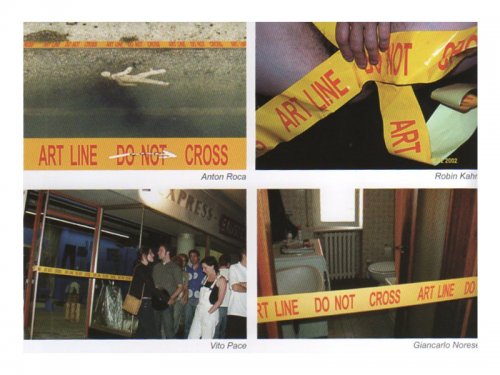
- Art Line do not cross
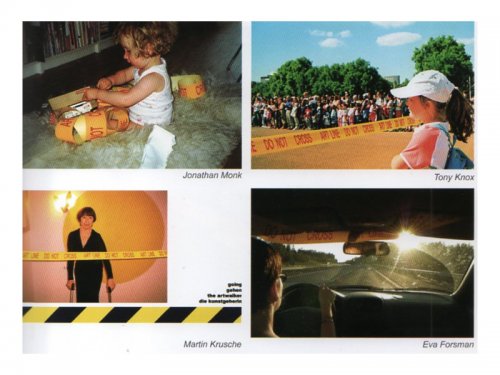
- Art Line do not cross
However, Ricciardi doesn’t focus only on collective projects. The artworks he realised for his solo and group exhibitions reveal an analytical and reflective mind which finds a dialogue with the viewer, often using extra-artistic media such as in Desktops, an installation made for the exhibition Due Installazioni (Two installaions) at Martano Art Gallery (Turin, 2006).
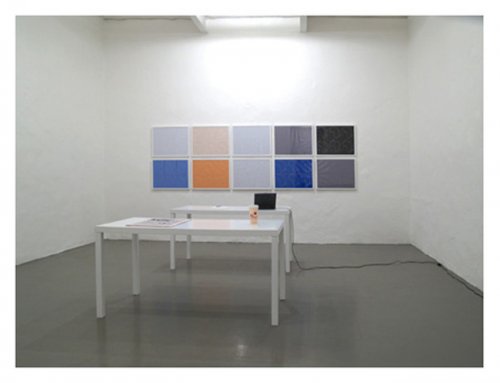
- Desktops
The work aims to evoke the atmosphere of an office, but the result creates a sense of estrangement : starting from the title, in which the English word “desktops” refers both to the writing desk and to the main computer desk. The lack of the chairs which transforms the worktops into rejecting surfaces usable only with the eyes, the utilization of common use objects (a newspaper, a computer, a cup of coffee) together with the obsessive repetition of the image of the African continent (defined as the “gigantic icon of removal” by Francesca Comisso in the exhibition catalogue) almost build a movie set and talk, on the one hand, to the bad conscience of the West and, on the other hand, they suggest that the narrative which every viewer is called to create -just because every object is familiar to him- has a subtext which everyone can recognize in different ways.
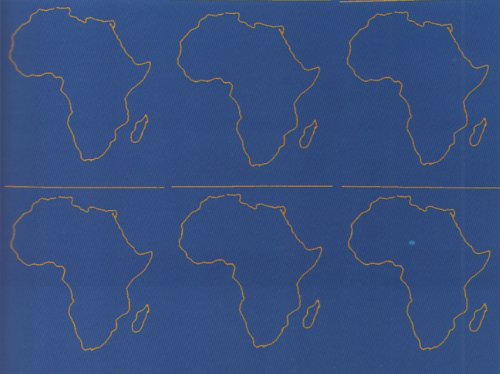
- Desktops (part.)
Also with more traditionally artistic media though, the reflection and civil commitment are the heart of his work. In Pilato’s game (2009) for example -that is a ceramic sculpture, therefore an object traditionally perceived as artistic- Ricciardi strives to deny the nature of the object and of the material.
First of all in the size and the nature of the sculpture which recalls the Game of Fifteen (the square made up of sixteen slots, where you have to order the numbers from one to fifteen) but in which the empty slot allowing the movement of every single slot lacks.
The effort to change what is around often pushes us to wash our own hands of it, as Pilato did, and to find an easier way to the reception or -in other words- it brings us to the resignation to the status quo.
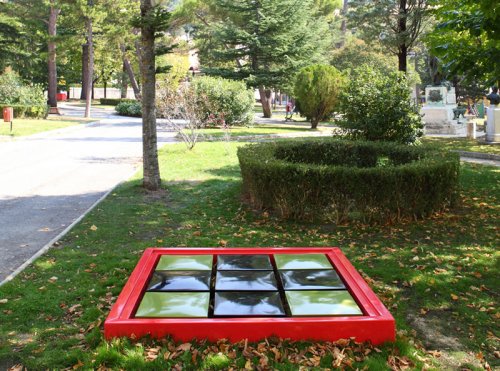
- Pilato’s game
However, there are subtle bits of humor and playful spirit artworks, such as A Trompeur Trompeur Et Demi (2011), a photograph of Marcel Duchamp on which the artist has traced two thin mustache, avenging the Mona Lisa.
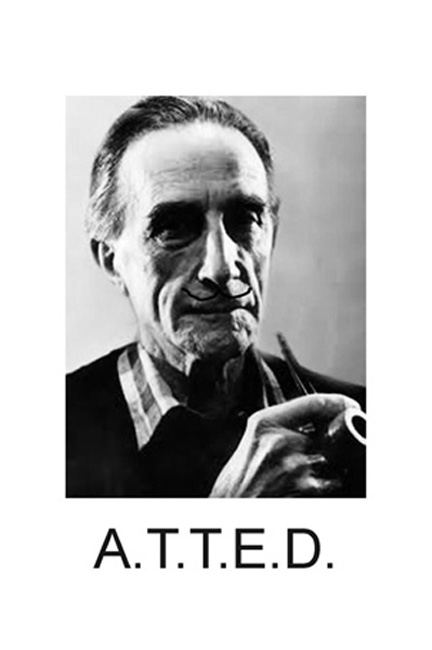
- A Trompeur Trompeur Et Demi
The importance of the language is proposed in several works : from The New Little Red Book (2002), an artist’s book composed of words borrowed from the computer keyboard, to Per bocca di (As spoken by, 2010) where the photos of art and culture main personalities as Andy Warhol, Pier Paolo Pasolini, Leo Longanesi, Marcel Duchamp are linked to mottoes and maxims they pronounced (with the significant exception of John Cage, whose mouth is “shut up” with a piece of score) and in the artwork -artist’s-book and video- (the) Words from the Twentieth Century (2007) that belongs to the project L’origine è la meta -The origin is the goal (whose research are collected in the homonymous book curated by Vincenzo Cuomo), which builds an alphabet with words that have characterized the 20th century, going from “Aphasia” to “Zeppelin”, evoking moments related to culture (such as “Dada”, “Nausee” or “Ou-topia”), dread memories (“Gestapo”, “B52”), unresolved issues (“Viet-cong”, “Yugoslavia”), changes of everyday life (“Pc”, “K-way”, “Wurstel”).
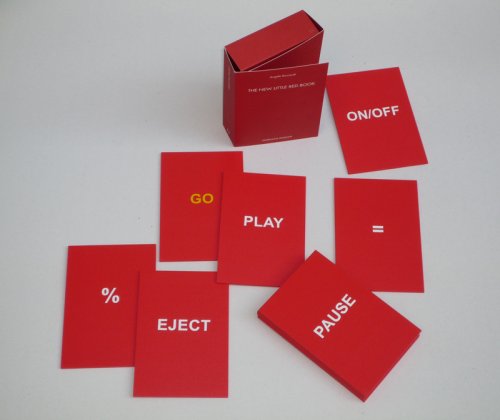
- The New Little Red Book
As a scientist or an alchemist, through art Ricciardi looks for something hidden, which he will be able to recognize when he has found it. The works spared along this way are stages of an intellectual and civil journey toward an unknown goal, they born out of his mind, not only as ideas, but also as complete and finished projects : to realize them is just the last part of the creative process, and at the same time the first of a new starting point for his research.
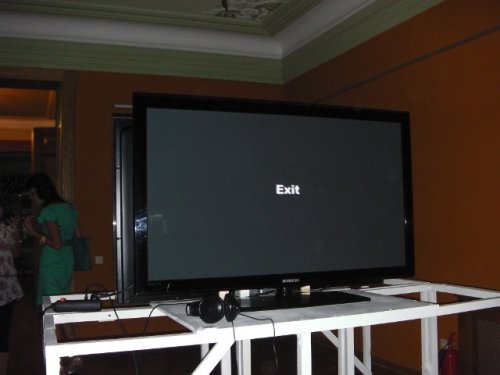
- (the) Words of Twentieth Century
The artist feel himself as a part of the community, the political militancy and the disillusions for the dissolution of ideals and of a daily practice to the seek of wealth and good for everybody, for the Others, become a plural and meaningful art, never didactic nor intentionally pedagogical, rather proposing by bearing a message which sometimes becomes installations or sculptures, someothers happenings and performances, avoiding fixed routes and clichès.
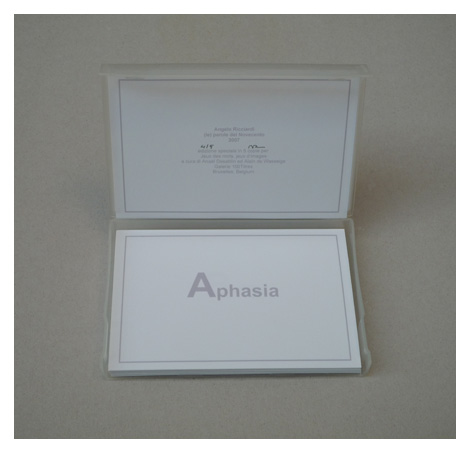
- (the) Words of Twentieth Century
And yet, in a continuum of coherent projects always in progress, 2013 ends with the birth of a new artist’s-book, built by the usual community : a notebook with the header “Artiste à l’artiste” that reproduces an imaginary book by Henry Matisse.

- Artiste à l’artiste
Ricciardi traced there its own intervention and has asked other artists to do the same, to address a message "from an artist to another artist."
The book, which is still travelling, once completed will be acquired by the Mart in Rovereto, in the archive of Twentieth Century.

- Quel che resta (part.)
The last piece of his research, at least by now, is Quel che resta (What remains), a collage on canvas that reminds a time-worn fresco. Images of daily life, promises of the future, a (inevitable ?) cultural globalization build a fragmentary, nostalgic and at the same time immanent story, floating in the grey of missed opportunities and hopes of the future.
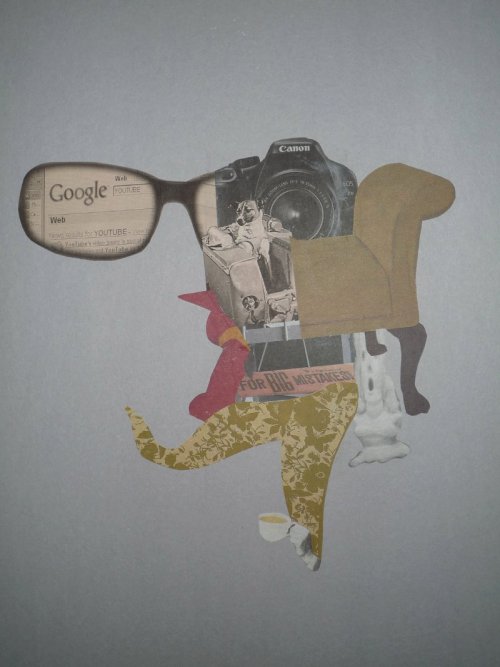
- Quel che resta (part.)
Ricciardi never left Italy to live abroad, but somehow he does it for every exhibition, for each artwork. Because the community which he belongs to is not geographically bounded, but - and today thanks to the web easier than in the past- ideally gathered around art, inextricably linked to the idea of autonomy and transnational view, and the viewer he is talking about, right through Art, is free and ineluctably citizen of the world.
Italiano —>
Voir en ligne : Angelo Ricciardi’s Official site
Acknowledgments :
Antonella Opera for supervision of English translation

